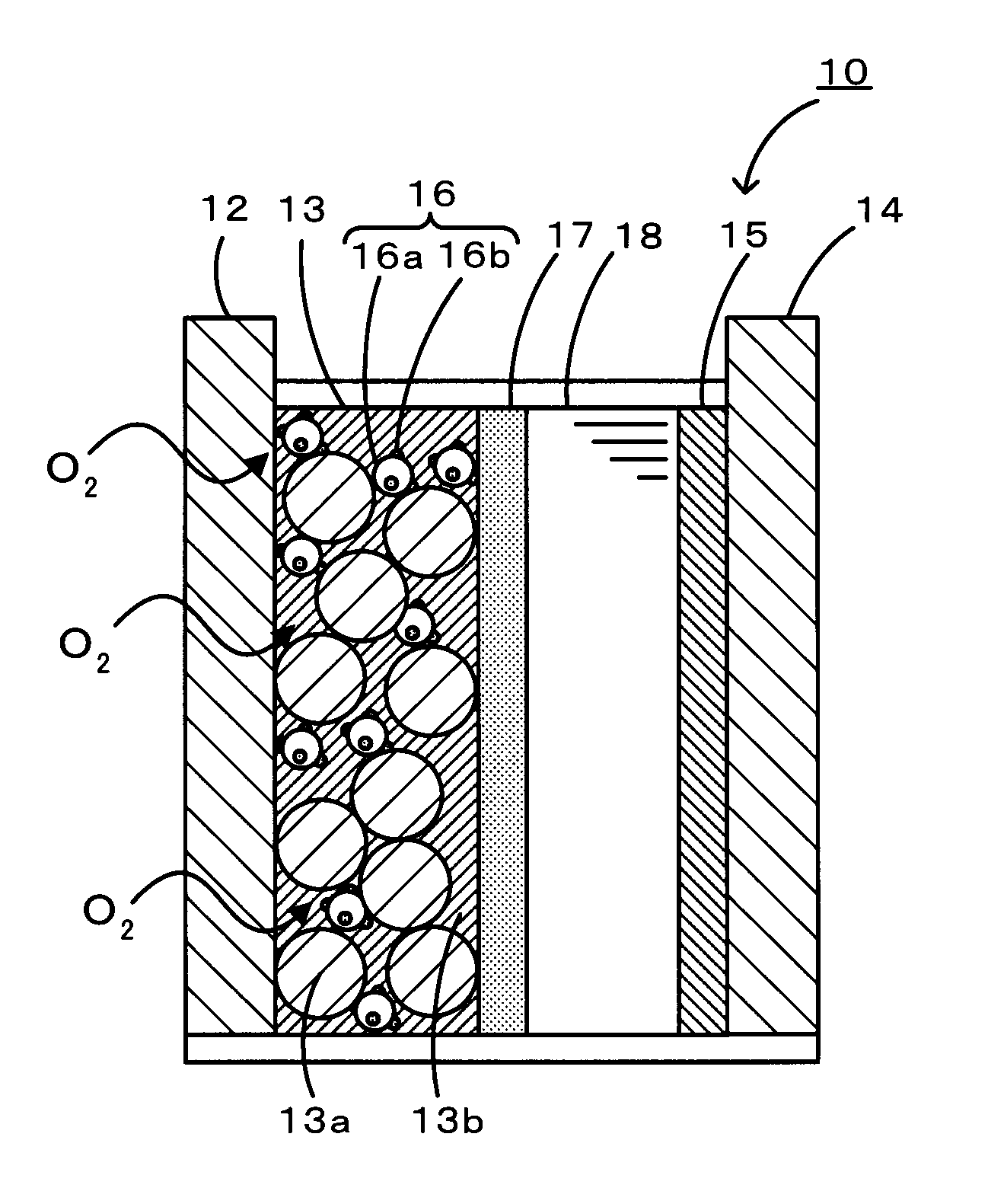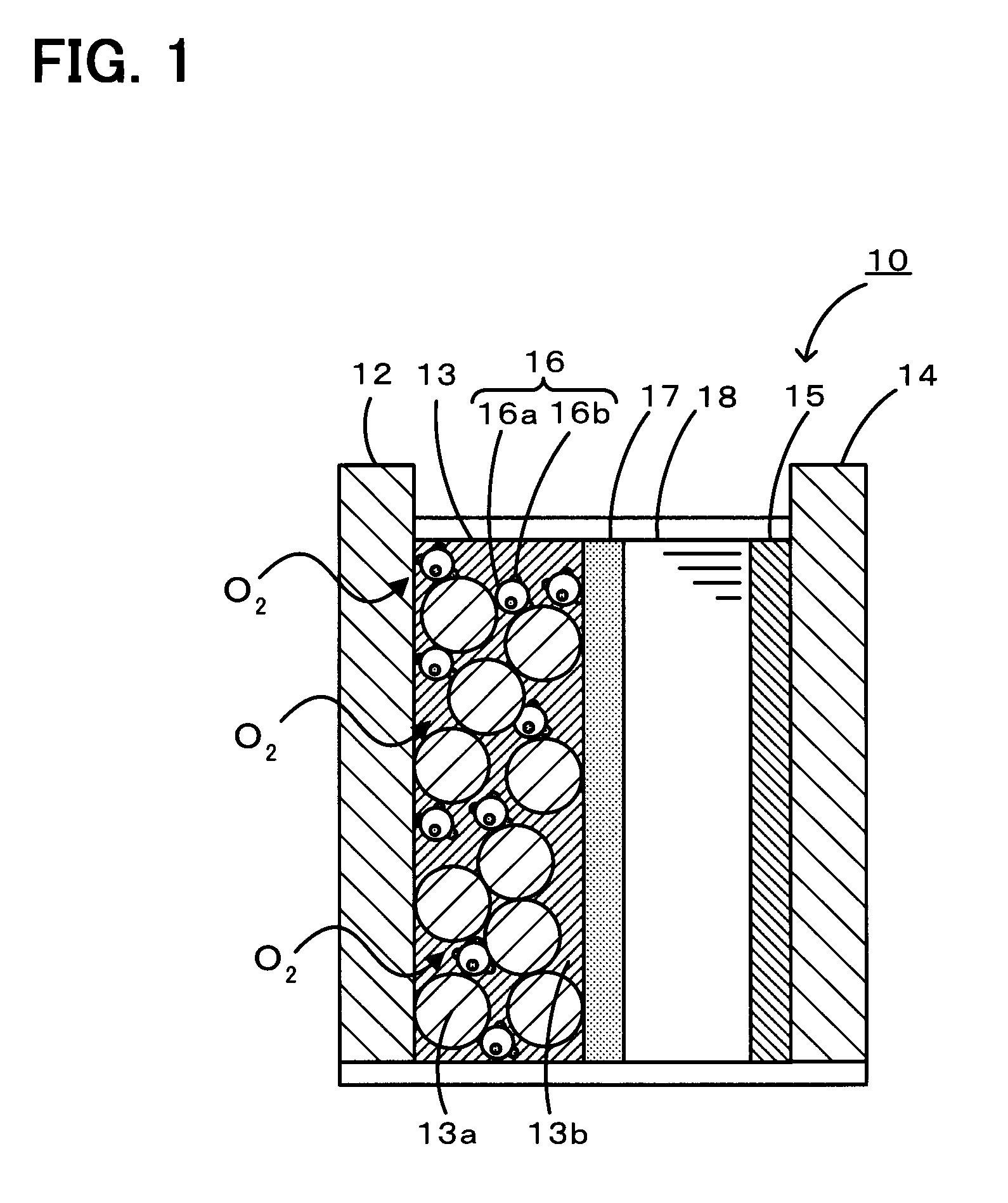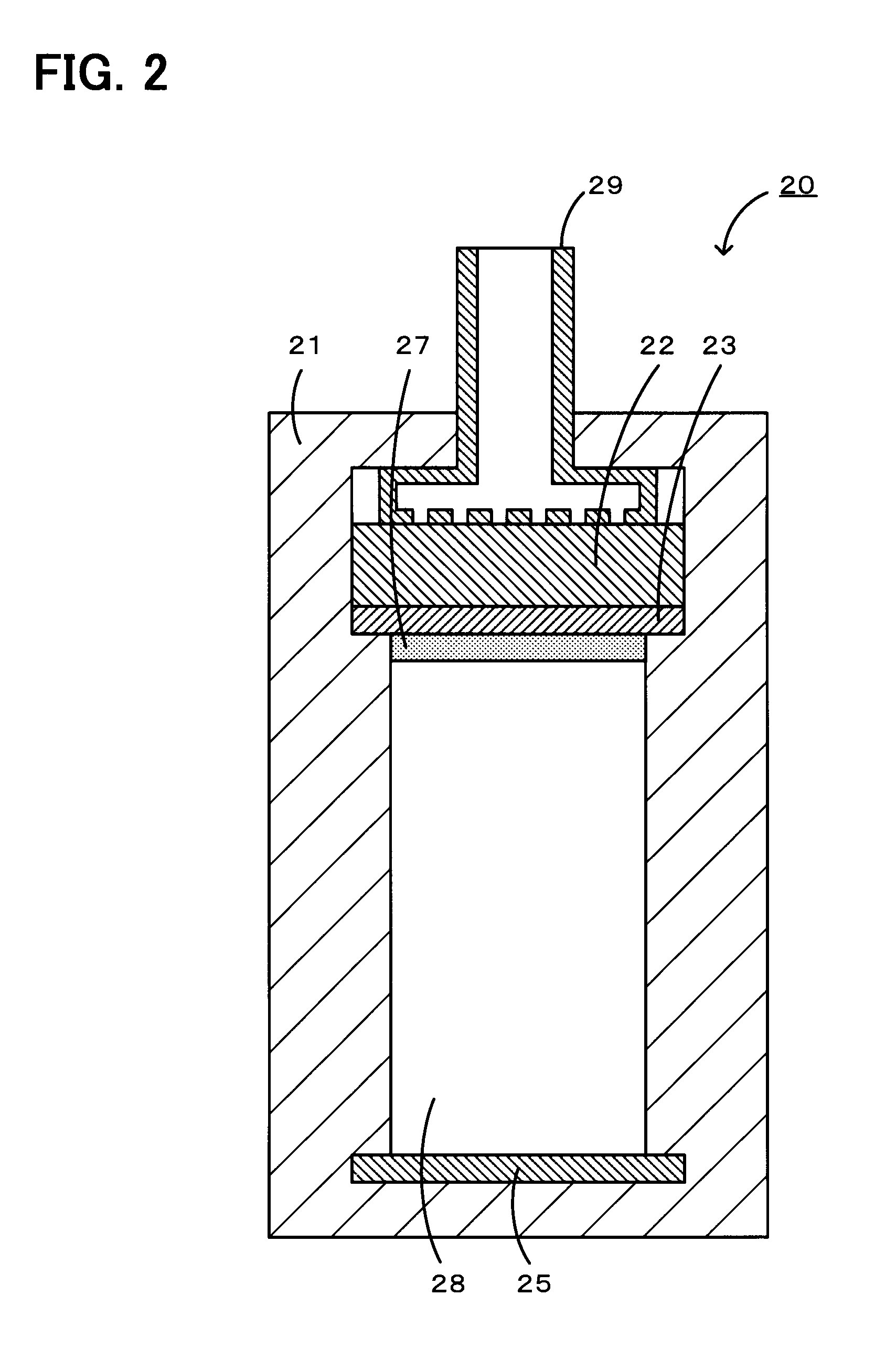Lithium-air battery
- Summary
- Abstract
- Description
- Claims
- Application Information
AI Technical Summary
Benefits of technology
Problems solved by technology
Method used
Image
Examples
example 1
[0023]A catalyst used for a positive electrode was prepared as follows. An aqueous solution was prepared by mixing cerium nitrate and zirconium nitrate so that ceria and zirconia, which were final products, had a weight ratio ceria:zirconia of 5:1. Aqueous ammonia was then added dropwise to the aqueous solution in a beaker under stirring to neutralize the solution, thus producing a precipitate. The precipitate was heated to 400° C. in air and maintained for five hours to vaporize and decompose ammonium nitrate contained in the precipitate. Subsequently, the precipitate was further sintered at 600° C. in air for five hours, thus allowing a ceria-zirconia solid solution powder (cerium-zirconium compound oxide) to be obtained. The specific surface area of this solid solution powder was measured with a MICROSORP 42231I manufactured by Microdata K.K. by a BET one-point method utilizing nitrogen adsorption. The solid solution powder had a specific surface area of 65 m2 / g. The solid soluti...
example 2
[0025]A catalyst used for a positive electrode was prepared as follows. An aqueous solution was prepared by mixing cerium nitrate and aluminum nitrate so that ceria and alumina, which were final products, had a weight ratio ceria:alumina of 89:11. Aqueous ammonia was then added dropwise to the aqueous solution in a beaker under stirring to neutralize the solution, thus producing a precipitate. The precipitate was heated to 400° C. in air and maintained for five hours to vaporize and decompose ammonium nitrate contained in the precipitate. Subsequently, the precipitate was further sintered at 600° C. in air for five hours, thus allowing a ceria-alumina solid solution powder (cerium-aluminum compound oxide) to be obtained. The specific surface area of this solid solution powder was measured as in Example 1. The solid solution powder had a specific surface area of 90.1 m2 / g. The solid solution powder was used as a support, and gold was supported on the surface of the powder by being de...
PUM
| Property | Measurement | Unit |
|---|---|---|
| Percent by mass | aaaaa | aaaaa |
| Weight | aaaaa | aaaaa |
| Metallic bond | aaaaa | aaaaa |
Abstract
Description
Claims
Application Information
 Login to View More
Login to View More - R&D
- Intellectual Property
- Life Sciences
- Materials
- Tech Scout
- Unparalleled Data Quality
- Higher Quality Content
- 60% Fewer Hallucinations
Browse by: Latest US Patents, China's latest patents, Technical Efficacy Thesaurus, Application Domain, Technology Topic, Popular Technical Reports.
© 2025 PatSnap. All rights reserved.Legal|Privacy policy|Modern Slavery Act Transparency Statement|Sitemap|About US| Contact US: help@patsnap.com



